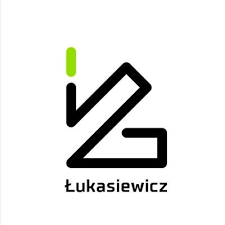CHAPTER 1: INTRODUCTION
1.1. Report description
1.2. Key benefits for stakeholders
1.3. Key market segments
1.4. Research methodology
1.4.1. Secondary research
1.4.2. Primary research
1.5. Analyst tools and models
CHAPTER 2: EXECUTIVE SUMMARY
2.1. Key findings of the study
2.2. CXO perspective
CHAPTER 3: MARKET OVERVIEW
3.1. Market definition and scope
3.2. Key findings
3.2.1. Top investment pockets
3.3. Porter’s five forces analysis
3.4. Market dynamics
3.4.1. Drivers
3.4.1.1. High waste generation
3.4.1.2. Rapid increase in insects
3.4.2. Restraint
3.4.2.1. Storage and handling of insecticides
3.4.3. Opportunity
3.4.3.1. Rise in stringent government regulation for waste management
3.5. Top player positioning, 2018
3.6. Active Ingredients Analysis
3.7. Brand Analysis
3.8. Waste Management Associations
3.9. Waste Collection Frequency, By Country
3.10. Frequency Of Use Of Insecticides, By Country
CHAPTER 4: EUROPE INSECTICIDES MARKET FOR WASTE MANAGEMENT, BY TYPE
4.1. Overview
4.1.1. Market size and forecast
4.2. Larvicide
4.2.1. Key market trends, growth factors and opportunities
4.2.2. Market size and forecast, by country
4.3. Adulticide
4.3.1. Key market trends, growth factors and opportunities
4.3.2. Market size and forecast, by country
CHAPTER 5: EUROPE INSECTICIDES MARKET FOR WASTE MANAGEMENT, BY WASTE TREATMENT METHOD
5.1. Overview
5.1.1. Market size and forecast
5.2. Mechanical Biological Treatment (MBT)
5.2.1. Key market trends, growth factors and opportunities
5.2.2. Market size and forecast, by country
5.3. Incineration
5.3.1. Key market trends, growth factors and opportunities
5.3.2. Market size and forecast, by country
5.4. Anaerobic Digestion
5.4.1. Key market trends, growth factors and opportunities
5.4.2. Market size and forecast, by country
CHAPTER 6: EUROPE INSECTICIDES MARKET FOR WASTE MANAGEMENT, BY METHOD OF APPLICATION
6.1. Overview
6.1.1. Market size and forecast
6.2. Toxic Bait
6.2.1. Key market trends, growth factors and opportunities
6.2.2. Market size and forecast, by country
6.2.3. Dry scatter baits
6.2.3.1. Market size and forecast, by country
6.2.4. Liquid sprinkle baits
6.2.4.1. Market size and forecast, by country
6.2.5. Liquid bait dispensers
6.2.5.1. Market size and forecast, by country
6.3. Dichlorvos Vaporizer
6.3.1. Key market trends, growth factors and opportunities
6.3.2. Market size and forecast, by country
6.4. Outdoor Space-Spraying
6.4.1. Key market trends, growth factors and opportunities
6.4.2. Market size and forecast, by country
6.5. Larvicide sprayers
6.5.1. Key market trends, growth factors and opportunities
6.5.2. Market size and forecast, by country
6.6. Others
6.6.1. Key market trends, growth factors and opportunities
6.6.2. Market size and forecast, by country
CHAPTER 7: EUROPE INSECTICIDES MARKET FOR WASTE MANAGEMENT, BY ACTIVE INGREDIENT
7.1. Overview
7.1.1. Market size and forecast
7.2. Organophosphorus Compounds
7.2.1. Key market trends, growth factors and opportunities
7.2.2. Market size and forecast, by country
7.2.3. Azamethiphos
7.2.3.1. Market size and forecast, by country
7.2.4. Diazinon
7.2.4.1. Market size and forecast, by country
7.2.5. Dimethoate
7.2.5.1. Market size and forecast, by country
7.2.6. Pirimiphos methyl
7.2.6.1. Market size and forecast, by country
7.2.7. Others
7.2.7.1. Market size and forecast, by country
7.3. Pyrethroids compounds
7.3.1. Key market trends, growth factors and opportunities
7.3.2. Market size and forecast, by country
7.3.3. Bioresmethrin
7.3.3.1. Market size and forecast, by country
7.3.4. Cyfluthrin
7.3.4.1. Market size and forecast, by country
7.3.5. Deltamethrin
7.3.5.1. Market size and forecast, by country
7.3.6. Pyrethrins
7.3.6.1. Market size and forecast, by country
7.3.7. Others
7.3.7.1. Market size and forecast, by country
7.4. Neonicotinoid compounds
7.4.1. Key market trends, growth factors and opportunities
7.4.2. Market size and forecast, by country
7.4.3. Imidacloprid
7.4.3.1. Market size and forecast, by country
7.4.4. Thiamethoxam
7.4.4.1. Market size and forecast, by country
7.4.5. Others
7.4.5.1. Market size and forecast, by country
7.5. Insect growth regulator
7.5.1. Key market trends, growth factors and opportunities
7.5.2. Market size and forecast, by country
7.5.3. Cyromazine
7.5.3.1. Market size and forecast, by country
7.5.4. Others
7.5.4.1. Market size and forecast, by country
CHAPTER 8: EUROPE INSECTICIDES MARKET FOR WASTE MANAGEMENT, BY COUNTRY
8.1. Overview
8.1.1. Market size and forecast
8.2. Germany
8.2.1. Market size and forecast, by type
8.2.2. Market size and forecast, by waste treatment method
8.2.3. Market size and forecast, by method of application
8.2.3.1. Market size and forecast, by toxic bait type
8.2.4. Market size and forecast, by active ingredient
8.2.4.1. Market size and forecast, by organophosphorus compounds type
8.2.4.2. Market size and forecast, by pyrethroids compounds type
8.2.4.3. Market size and forecast, by Neonicotinoids type
8.2.4.4. Market size and forecast, by Insect growth regulator type
8.3. France
8.3.1. Market size and forecast, by type
8.3.2. Market size and forecast, by waste treatment method
8.3.3. Market size and forecast, by method of application
8.3.3.1. Market size and forecast, by toxic bait type
8.3.4. Market size and forecast, by active ingredient
8.3.4.1. Market size and forecast, by organophosphorus compounds type
8.3.4.2. Market size and forecast, by pyrethroids compounds type
8.3.4.3. Market size and forecast, by Neonicotinoids type
8.3.4.4. Market size and forecast, by Insect growth regulator type
8.4. UK
8.4.1. Market size and forecast, by type
8.4.2. Market size and forecast, by waste treatment method
8.4.3. Market size and forecast, by method of application
8.4.3.1. Market size and forecast, by toxic bait type
8.4.4. Market size and forecast, by active ingredient
8.4.4.1. Market size and forecast, by organophosphorus compounds type
8.4.4.2. Market size and forecast, by pyrethroids compounds type
8.4.4.3. Market size and forecast, by Neonicotinoids type
8.4.4.4. Market size and forecast, by Insect growth regulator type
8.5. Italy
8.5.1. Market size and forecast, by type
8.5.2. Market size and forecast, by waste treatment method
8.5.3. Market size and forecast, by method of application
8.5.3.1. Market size and forecast, by toxic bait type
8.5.4. Market size and forecast, by active ingredient
8.5.4.1. Market size and forecast, by organophosphorus compounds type
8.5.4.2. Market size and forecast, by pyrethroids compounds type
8.5.4.3. Market size and forecast, by Neonicotinoids type
8.5.4.4. Market size and forecast, by Insect growth regulator type
8.6. Spain
8.6.1. Market size and forecast, by type
8.6.2. Market size and forecast, by waste treatment method
8.6.3. Market size and forecast, by method of application
8.6.3.1. Market size and forecast, by toxic bait type
8.6.4. Market size and forecast, by active ingredient
8.6.4.1. Market size and forecast, by organophosphorus compounds type
8.6.4.2. Market size and forecast, by pyrethroids compounds type
8.6.4.3. Market size and forecast, by Neonicotinoids type
8.6.4.4. Market size and forecast, by Insect growth regulator type
8.7. Nordic countries
8.7.1. Market size and forecast, by type
8.7.2. Market size and forecast, by waste treatment method
8.7.3. Market size and forecast, by method of application
8.7.3.1. Market size and forecast, by toxic bait type
8.7.4. Market size and forecast, by active ingredient
8.7.4.1. Market size and forecast, by organophosphorus compounds type
8.7.4.2. Market size and forecast, by pyrethroids compounds type
8.7.4.3. Market size and forecast, by Neonicotinoids type
8.7.4.4. Market size and forecast, by Insect growth regulator type
8.7.5. Market size and forecast, by country
8.7.6. Denmark
8.7.6.1. Market size and forecast, by type
8.7.6.2. Market size and forecast, by waste treatment method
8.7.6.3. Market size and forecast, by method of application
8.7.6.3.1. Market size and forecast, by toxic bait type
8.7.6.4. Market size and forecast, by active ingredient
8.7.6.4.1. Market size and forecast, by organophosphorus compounds type
8.7.6.4.2. Market size and forecast, by pyrethroids compounds type
8.7.6.4.3. Market size and forecast, by Neonicotinoids type
8.7.6.4.4. Market size and forecast, by Insect growth regulator type
8.7.7. Finland
8.7.7.1. Market size and forecast, by type
8.7.7.2. Market size and forecast, by waste treatment method
8.7.7.3. Market size and forecast, by method of application
8.7.7.3.1. Market size and forecast, by toxic bait type
8.7.7.4. Market size and forecast, by active ingredient
8.7.7.4.1. Market size and forecast, by organophosphorus compounds type
8.7.7.4.2. Market size and forecast, by pyrethroids compounds type
8.7.7.4.3. Market size and forecast, by Neonicotinoids type
8.7.7.4.4. Market size and forecast, by Insect growth regulator type
8.7.8. Norway
8.7.8.1. Market size and forecast, by type
8.7.8.2. Market size and forecast, by waste treatment method
8.7.8.3. Market size and forecast, by method of application
8.7.8.3.1. Market size and forecast, by toxic bait type
8.7.8.4. Market size and forecast, by active ingredient
8.7.8.4.1. Market size and forecast, by organophosphorus compounds type
8.7.8.4.2. Market size and forecast, by pyrethroids compounds type
8.7.8.4.3. Market size and forecast, by Neonicotinoids type
8.7.8.4.4. Market size and forecast, by Insect growth regulator type
8.7.9. Sweden
8.7.9.1. Market size and forecast, by type
8.7.9.2. Market size and forecast, by waste treatment method
8.7.9.3. Market size and forecast, by method of application
8.7.9.3.1. Market size and forecast, by toxic bait type
8.7.9.4. Market size and forecast, by active ingredient
8.7.9.4.1. Market size and forecast, by organophosphorus compounds type
8.7.9.4.2. Market size and forecast, by pyrethroids compounds type
8.7.9.4.3. Market size and forecast, by Neonicotinoids type
8.7.9.4.4. Market size and forecast, by Insect growth regulator type
8.7.10. Rest of Nordic
8.7.10.1. Market size and forecast, by type
8.7.10.2. Market size and forecast, by waste treatment method
8.7.10.3. Market size and forecast, by method of application
8.7.10.3.1. Market size and forecast, by toxic bait type
8.7.10.4. Market size and forecast, by active ingredient
8.7.10.4.1. Market size and forecast, by organophosphorus compounds type
8.7.10.4.2. Market size and forecast, by pyrethroids compounds type
8.7.10.4.3. Market size and forecast, by Neonicotinoids type
8.7.10.4.4. Market size and forecast, by Insect growth regulator type
8.7.11. The Netherlands
8.7.11.1. Market size and forecast, by type
8.7.11.2. Market size and forecast, by waste treatment method
8.7.11.3. Market size and forecast, by method of application
8.7.11.3.1. Market size and forecast, by toxic bait type
8.7.11.4. Market size and forecast, by active ingredien
8.7.11.4.1. Market size and forecast, by organophosphorus compounds type
8.7.11.4.2. Market size and forecast, by pyrethroids compounds type
8.7.11.4.3. Market size and forecast, by Neonicotinoids type
8.7.11.4.4. Market size and forecast, by Insect growth regulator type
8.7.12. Rest of Europe
8.7.12.1. Market size and forecast, by type
8.7.12.2. Market size and forecast, by waste treatment method
8.7.12.3. Market size and forecast, by method of application
8.7.12.3.1. Market size and forecast, by toxic bait type
8.7.12.4. Market size and forecast, by active ingredient
8.7.12.4.1. Market size and forecast, by organophosphorus compounds type
8.7.12.4.2. Market size and forecast, by pyrethroids compounds type
8.7.12.4.3. Market size and forecast, by Neonicotinoids type
8.7.12.4.4. Market size and forecast, by Insect growth regulator type
CHAPTER 9: COMPANY PROFILES
9.1. BIODEGMA GmbH
9.1.1. Company overview
9.1.2. Company snapshot
9.2. Viridor
9.2.1. Company overview
9.2.2. Company snapshot
9.3. BTA International GmbH
9.3.1. Company overview
9.3.2. Company snapshot
9.3.3. Key strategic moves and developments
9.4. Nehlsen AG
9.4.1. Company overview
9.4.2. Company snapshot
9.5. FCC Austria Abfall Service AG
9.5.1. Company overview
9.5.2. Company snapshot
9.6. Veolia
9.6.1. Company overview
9.6.2. Company snapshot
9.6.3. Operating business segments
9.6.4. Business performance
9.7. AMEY PLC
9.7.1. Company overview
9.7.2. Company snapshot
9.7.3. Operating business segments
9.7.4. Business performance
9.7.5. Key strategic moves and developments
9.8. Biffa
9.8.1. Company overview
9.8.2. Company snapshot
9.8.3. Operating business segments
9.8.4. Business performance
9.8.5. Key strategic moves and developments
9.9. Renewi PLC
9.9.1. Company overview
9.9.2. Company snapshot
9.9.3. Operating business segments
9.9.4. Business performance
9.9.5. Key strategic moves and developments
9.10. CNIM
9.10.1. Company overview
9.10.2. Company snapshot
9.10.3. Operating business segments
9.10.4. Business performance
9.11. REMONDIS SE & Co. KG
9.11.1. Company overview
9.11.2. Company snapshot
9.11.3. Operating business segments
9.12. LafargeHolcim Ltd
9.12.1. Company overview
9.12.2. Company snapshot
9.12.3. Operating business segments
9.12.4. Business performanc


